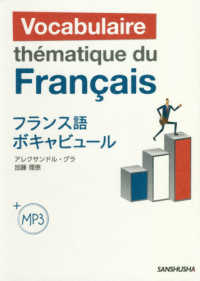Full Description
Do your students struggle to see the point in learning a language other than English? Do you teach in an English-dominant setting? If so, this book is a 'must-read'. It offers international perspectives on CLIL, a revolutionary teaching approach where students study subjects, for example physics or history, in a language which is not their own. Informed by research carried out by the authors, it addresses the issues of developing CLIL in Anglophone contexts and shows how to implement this method of language learning successfully in the reality of the classroom. Through three key themes, sustainability, pedagogy and social justice, each author explores CLIL as a means of addressing the high levels of cultural diversity and socio-economic disparity in Anglophone-dominant settings. Authored by experts in the field, it offers a set of flexible teaching tools, which serve to combine language and content, ultimately enhancing the learning experience of students.
Contents
List of figures; List of tables; List of contributors; Foreword Diane J. Tedick; Preface; Acknowledgement; Part I. The Educational Context for CLIL: 1. CLIL in multilingual and English-background contexts: expanding the potential of content and language integrated pedagogies for mainstream learning Kim Bower, Russell Cross and Do Coyle; 2. How can learners be motivated in a context of demotivation for foreign language learning? Kim Bower; 3. A rationale for CLIL in primary schools Philip Hood; Part II. Current Aspects of Practice in CLIL: 4. What pupils say about transition (KS2-3) and what this might mean for CLIL Gary N. Chambers; 5. Diversity and transnationalism: the 'merged curriculum' approach in bilingual programmes in Australia Simone Smala; 6. Three schools, three models: senior leaders' views about the value of CLIL in their school Kim Bower; 7. Plurilingualism in the content and language integrated classroom: students' languages as resources in the CLIL context Margaret Gearon and Russell Cross; Part III. New Knowledge/Future Directions: 8. Lessons to be learned: a professional development approach to curriculum planning in a multilingual school in Galicia Xabier San Isidro and David Lasagabaster; 9. Supporting peer collaboration and social cohesion in multilingual classrooms: practical insights from content-based learning contexts Gabriela Meier; 10. Exploring the potential of a pluriliteracies approach Do Coyle; Afterword Russell Cross, Kim Bower, Do Coyle and Gary N. Chambers; Index.








